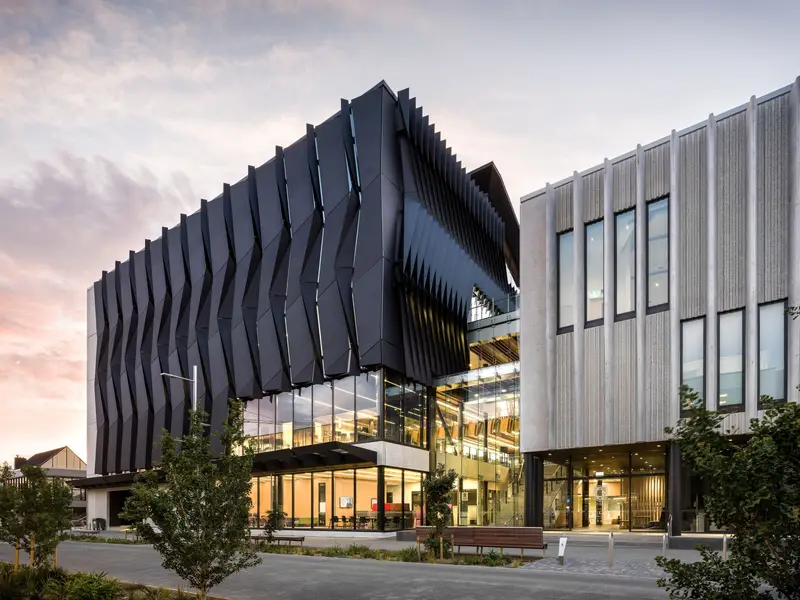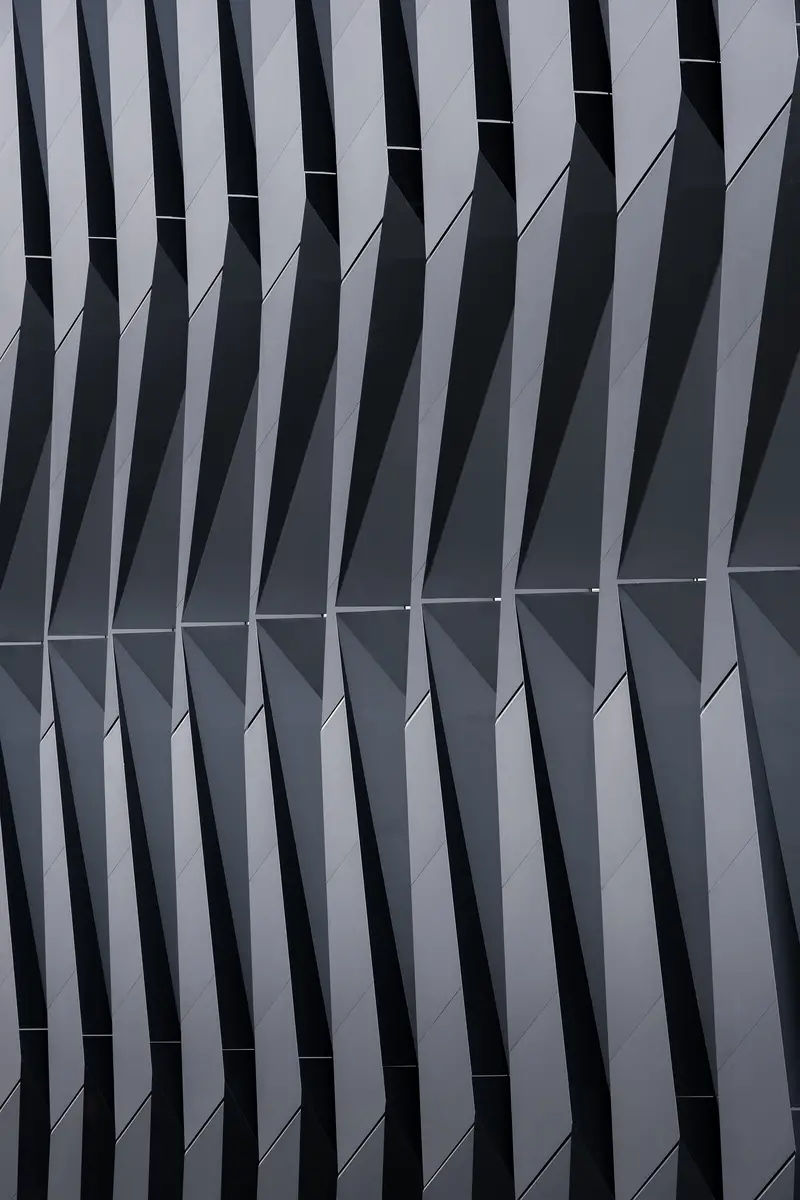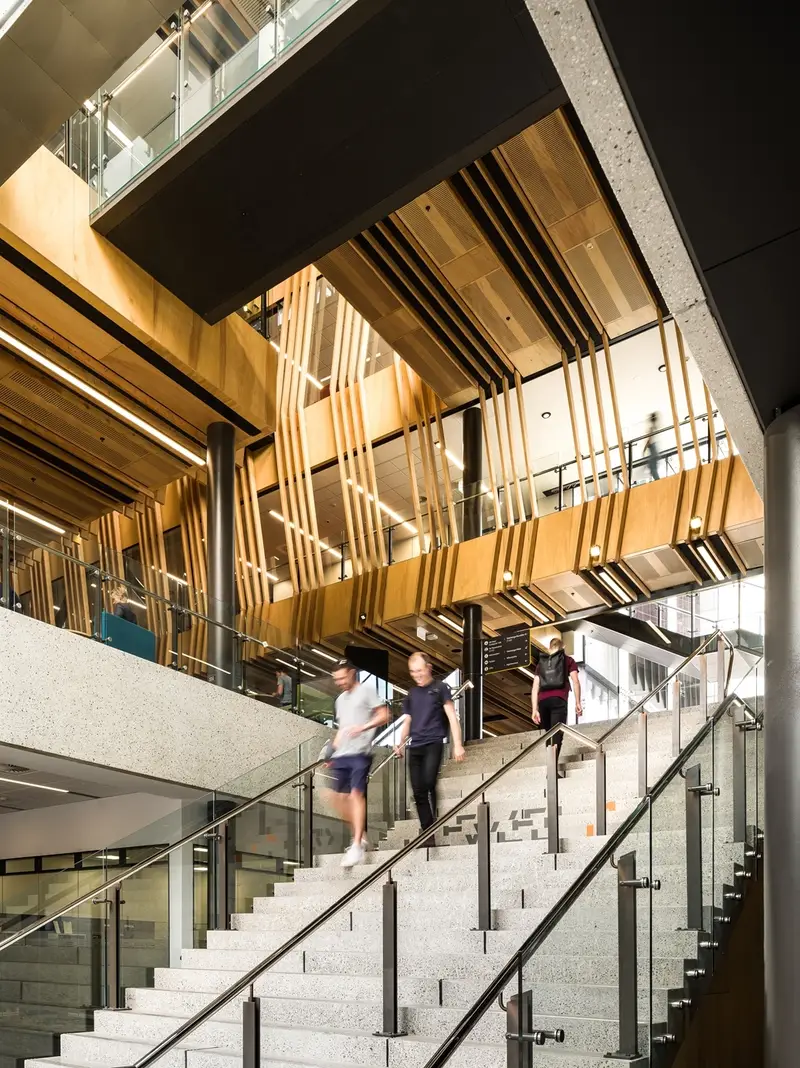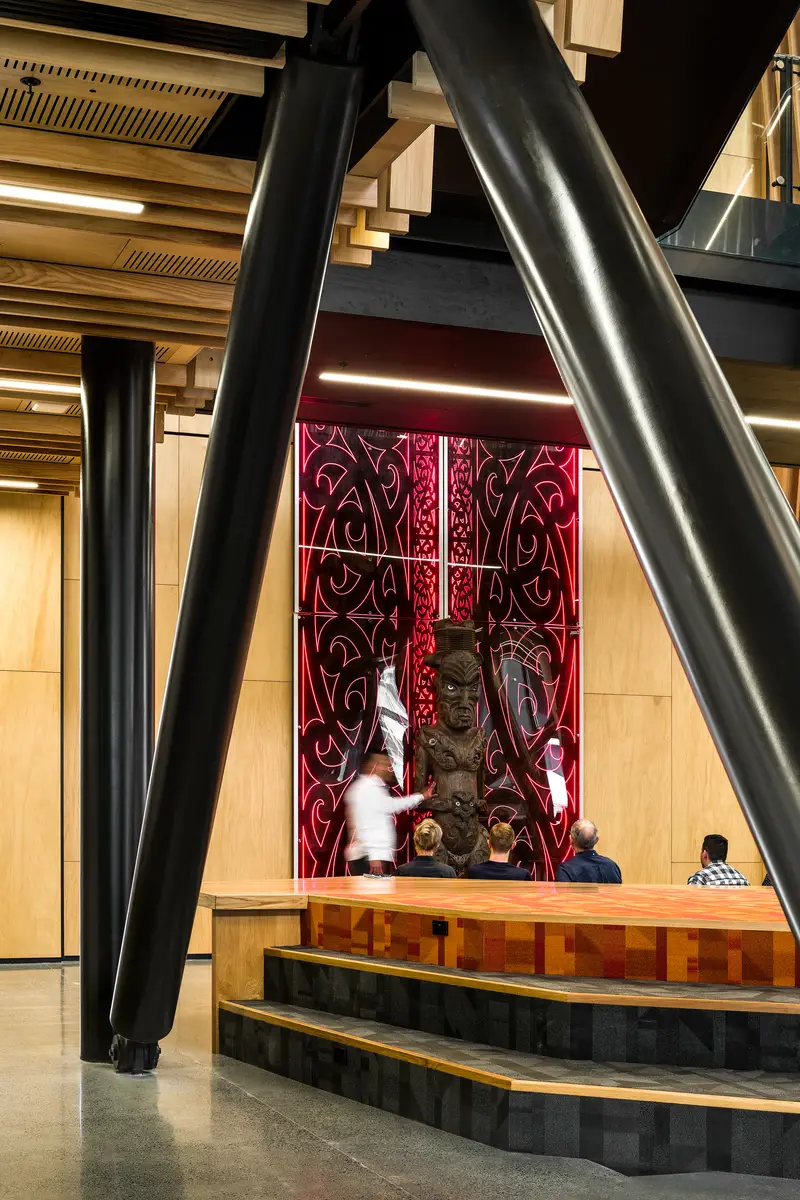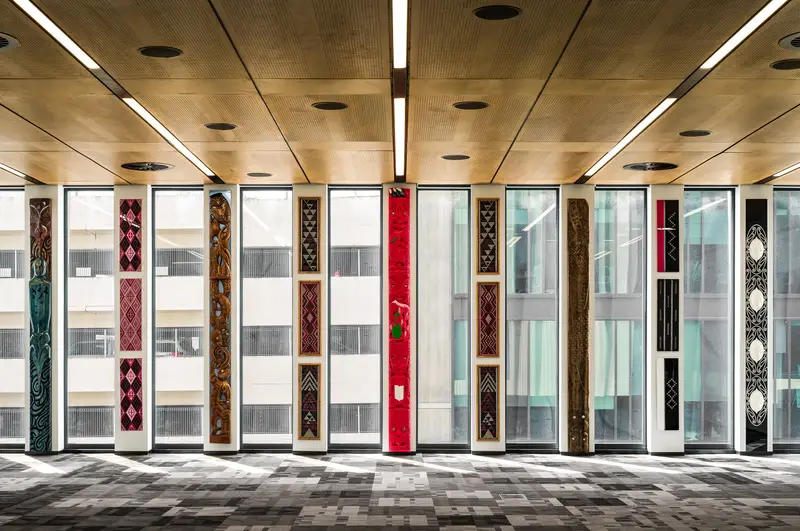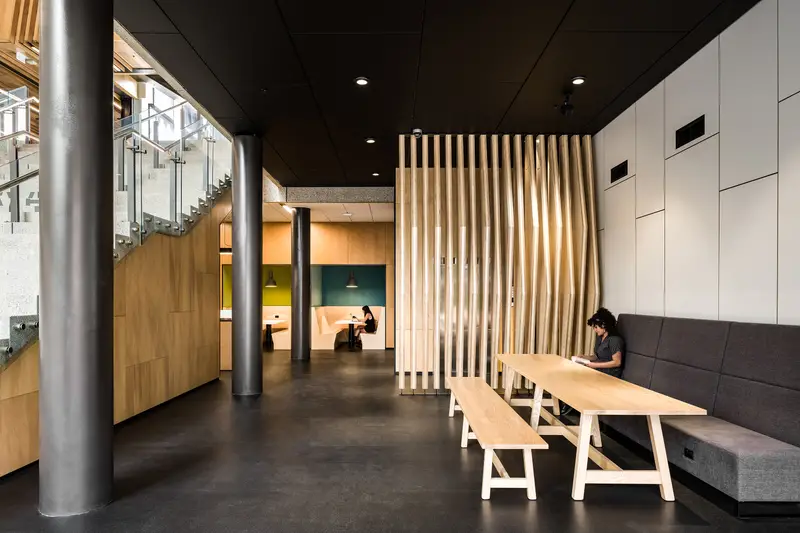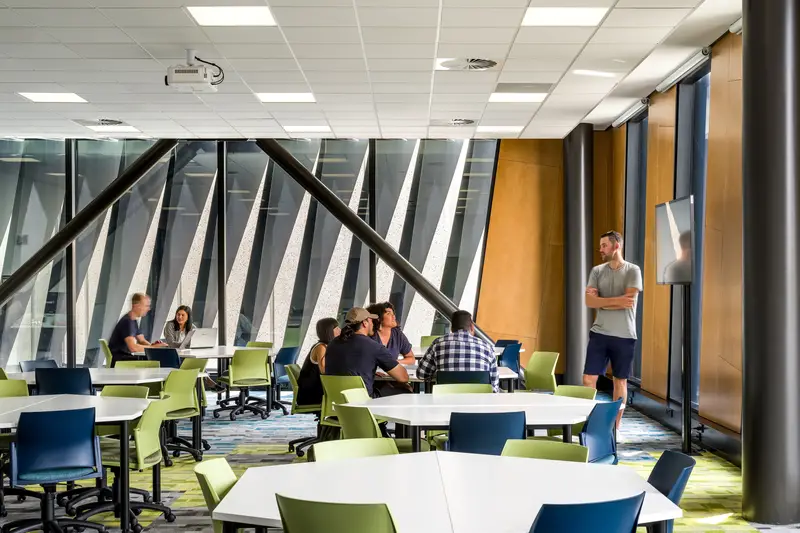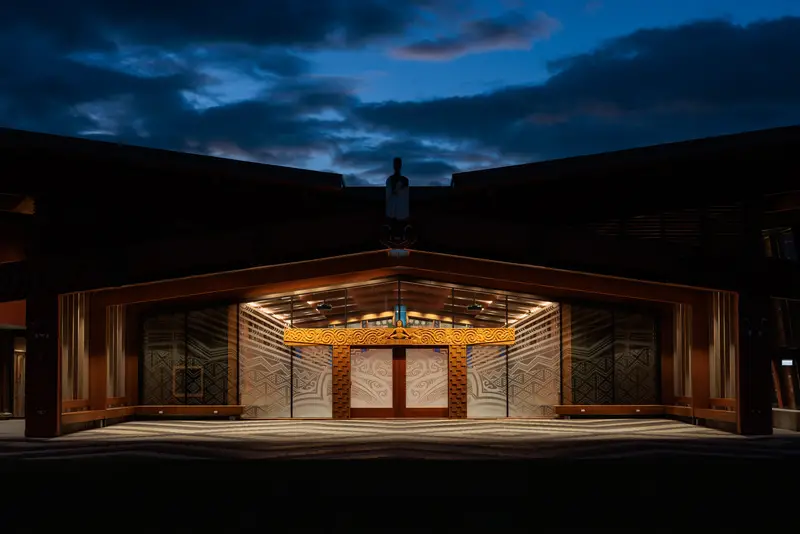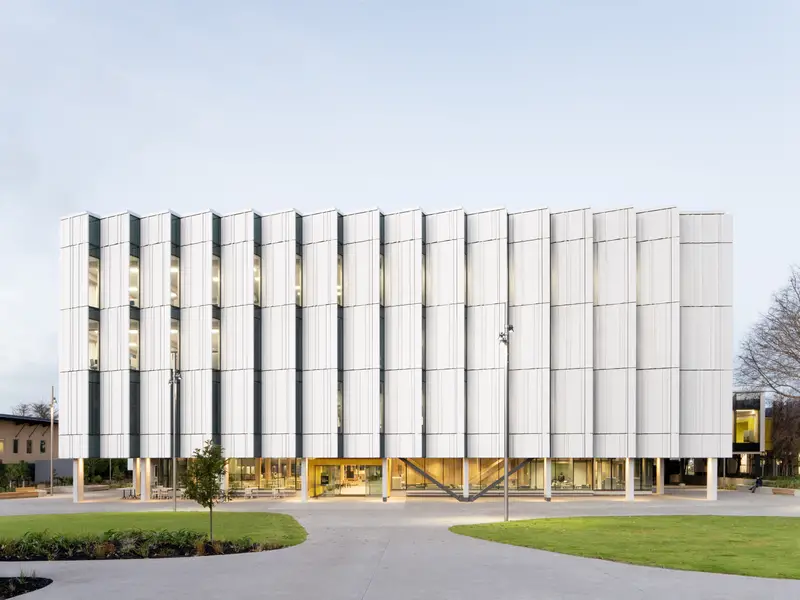Reflecting a rich cultural heritage
The architecture of Tauranga Campus is approached almost archaeologically, weaving together components that recall the historic and cultural landscape of the peninsula to reflect the site’s legacy and significance to mana whenua. The volcanic cones of the area were extensively quarried after colonisation, an act that impacted the area’s landscape. Rhyolite from the cores of these cones is mixed into the precast concrete panels, memorialising this history as well as grounding the building explicitly in its natural environment.
The distinctive, origami-esque overlapping folded metal panels, which create a strong feature of the campus identity, were inspired by the skin of the mangopare (hammerhead) shark, made up of thousands of tiny overlapping teeth called dentals, protecting the animal like armour. These panels function as a kaitiaki for building inhabitants, evoking strength and dynamism while protecting the interior of the building from overheating. The mangopare symbolises resilience and fighting spirit to mana whenua and is embedded into the ancestral meeting house of Ngāi Tamarāwaho, where mangopare carving patterns adorn the tāhūhū (ridge beam) of the whare.
Throughout, architecture and artworks are integrated to represent a journey towards biculturalism and cross-cultural understanding. With an important educational function for the University and mana whenua, artworks were commissioned from local, award-winning artists and curated by Whare Thompson (Ngapuhi, Ngāti Whātua, Te Whakatōhea), who also produced the three largest carved pieces. These form the cultural pillars of the campus and serve to demarcate thresholds, signal tikanga, and celebrate the cultural heritage of Tauranga Moana and the wider Bay of Plenty. Resonant messages promote the building’s educational purpose and include themes such as perseverance, resilience, and ambition which are key values in the building’s ultimate aim – the education of future leaders.
